 The first of four magnitudes is said to have the same ratio to the second, which the third has to the fourth, when any equimultiples whatsoever of the first and third being taken, and any equimultiples whatsoever of the second and fourth ; if the multiple... The first of four magnitudes is said to have the same ratio to the second, which the third has to the fourth, when any equimultiples whatsoever of the first and third being taken, and any equimultiples whatsoever of the second and fourth ; if the multiple...  Euclidian Geometry - Page 157by Francis Cuthbertson - 1874 - 349 pagesFull view Euclidian Geometry - Page 157by Francis Cuthbertson - 1874 - 349 pagesFull view - About this book
 | Euclides - Geometry - 1853 - 176 pages
...If, therefore, the first, &c. QED PROPOSITION IV. — THEOREM. If the first of four magnitudes has the same ratio to the second which the third has to the fowrth ; then any equimultiples whatever of tlie first and third shall have the same ratio to any equimultiples... | |
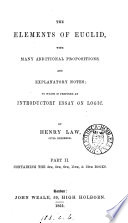 | Euclides - 1855 - 230 pages
...b = 6, which is the first case in Euclid. PROPOSITION A. THEOREM.—If the first of four magnitudes have the same ratio to the second which the third has to the fourth, then, if the first be greater than the second, the third is also greater than the fourth ; and if equal,... | |
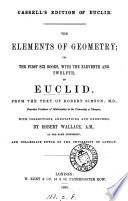 | Euclides - 1855 - 270 pages
...magnitude, they cannot be said to be of the same Hud, and so cannot have any ratio to each other. V. The first of four magnitudes is said to have the same ratio to the «cond, which the third has to the fourth, when any equimultiples whatsoever of the first and third... | |
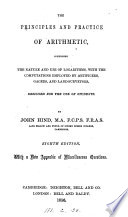 | John Hind - 1856 - 346 pages
...is stated in the fifth Book of Euclid's Elements, that "Proportion is the Similitude of Ratios ; and the first of four magnitudes is said to have the same...the second, which the third has to the fourth, when any equimultiples whatever of the first and third being taken, and any equimultiples whatever of the... | |
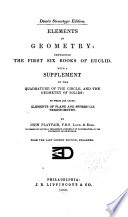 | John Playfair - Euclid's Elements - 1856 - 346 pages
...therefore A=mnC /(, tj',;t<f'£ PROP. IV. THEOR. /, / 2. // //>5 If the first of four magnitudes has thr, same ratio to the second which the third has to the fourth, and if any equimultiples whatever be taken of the first and third, and any whatever of the second and... | |
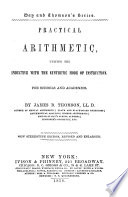 | James Bates Thomson - Arithmetic - 1858 - 400 pages
...answer is greater than the third term, arises from the fact, that theßrst türm of a proportion has the same ratio to the second, which the third has to the /он г £Л or answer ; consequently, if the answer is greater than the third term, the second term... | |
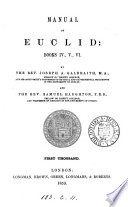 | Euclid - 1859 - 150 pages
...àiroiovovv ToXXaя-Xaíriaff/iov, rev áurоv i'Ctí Xóyov Xq^öivra raráXXqXa. If the first has the same ratio to the second which the third has to the fourth; any equimultiples whatever of the first and third shall have the same ratio to any equimultiples of... | |
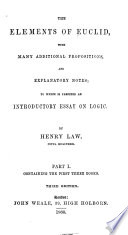 | Eucleides - 1860 - 396 pages
...the first case in Euclid. G. (c) V. 2. PROPOSITION A. THEOREM. — If the first of four magnitudes have the same ratio to the second which the third has to the fourth, then, if the first be greater than the second, the third is also greater than the fourth ; and if equal,... | |
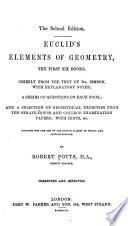 | Robert Potts - Geometry, Plane - 1860 - 380 pages
...is to G, so is F to H. (v. def. 5.) Therefore, if the first, &c. QED Cos, Likewise, if the first has the same ratio to the second, which the third has to the fourth, then also any equimultiples whatever of the first and third shall have the same ratio to the second... | |
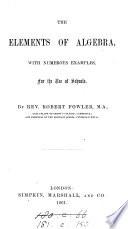 | Robert Fowler - 1861 - 426 pages
...those m = 16 j cases. PROPOKTION. 133. Def. — If there be four quantities, such that the first has the same ratio to the second which the third has to the fourth, then the four quantities are said to be proportionals. Thus if а, Ъ, с, d be the four quantities,... | |
| |